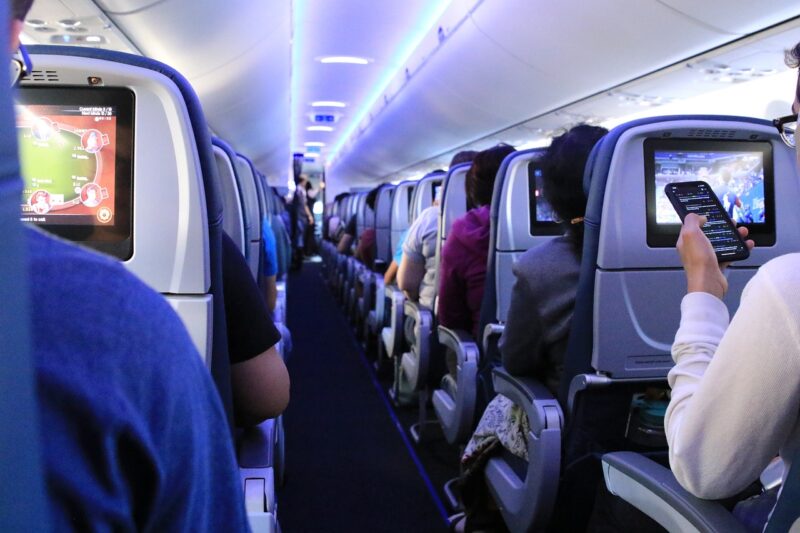
In a world where hobbies often revolve around the latest technology or outdoor activities, it may come as a surprise that collecting airline sick bags, also known as airsick bags or vomit bags, has emerged as a quirky and captivating pastime for enthusiasts around the globe. This article explores the origins of this peculiar hobby, the collectors involved, and the stories behind some of the most unique bags in existence.
1. The Origins of the Airline Sick Bag
Airline sick bags were introduced in the late 1940s as a practical solution for passengers experiencing nausea during flights, which frequently occurred due to turbulence or the overall stress of flying. Initially simple paper envelopes, these bags evolved alongside aviation, often featuring the logo of the airline, safety instructions, or even illustrated designs to distract passengers from the unpleasantness of their purpose.
While their primary function is to provide a means for passengers to deal with travel sickness, these bags have become more than just a necessity. As airlines began to brand their products, the bags transformed into collectible items showcasing the identity of their respective airlines.
2. The Hobby Takes Flight
The hobby of collecting airline sick bags began to take off in the 1980s, largely driven by the growth of aviation and an increase in air travel. As frequent flyers discovered unique bag designs, they started accumulating them as mementos from their journeys. Some collectors became more serious about their hobby, seeking out bags from various airlines, making connections with other enthusiasts, and even attending specialized conventions.
Collecting airline sick bags has drawn interest not only from aviation fans but also from individuals curious about the strange and humorous aspect of the collection. As word spread about the hobby, websites and forums dedicated to the collection of these bags emerged, further fueling the interest.
3. The Appeal of Collecting Sick Bags
What makes collecting sick bags appealing? Here are several factors that contribute to its popularity:
- Nostalgia: Many collectors have fond memories associated with air travel, and collecting sick bags serves as a tangible reminder of their adventures in the sky.
- Unique Designs: Each bag often features distinct artwork and branding, celebrating the culture and identity of a particular airline, which appeals to both design enthusiasts and travelers.
- Accessibility: Unlike some other collectibles, sick bags can often be obtained for free or at a minimal cost, making it an affordable hobby compared to others that require significant financial investment.
- Stories behind the bags: Each bag has a story. From unusual flights to unique destinations, the stories tied to these bags can add a sentimental touch that further enhances the collecting experience.
4. The Collector Community
The community of airline sick bag collectors is diverse and global, comprising individuals from all walks of life. Many collectors connect through online forums, social media groups, and specialty blogs dedicated to the hobby. These platforms offer a space for sharing collection highlights, swapping bags, and discussing the latest trends in aviation and bag designs.
Some collectors have expanded their passion beyond individual bags, creating entire exhibitions celebrating the bizarre world of airline memorabilia. Events like the “Aviation Collectibles Show” allow enthusiasts to showcase their collections and deepen their connections with like-minded individuals.
5. The Most Coveted Bags
Within the collector community, certain sick bags hold revered status due to their rarity or unique design. Some notable examples include:
- The Pan Am Bag: A nostalgic piece of airline history, the Pan Am sick bag is highly sought after by collectors due to the airline’s storied past.
- Limited Edition Bags: Some airlines create limited edition sick bags during special events or anniversaries, making these highly collectible.
- Bags with Celebrity Connections: Bags associated with high-profile events or celebrity passengers, such as those from private jets, tend to fetch higher value within collecting circles.
The hunt for these elusive bags can be exhilarating, driving collectors to airports, auctions, and online marketplaces in search of their next find.
6. The Future of the Hobby
As air travel evolves with advances in technology and shifting consumer preferences, one wonders about the future of airline sick bags. Some airlines have begun to phase out traditional sick bags in favor of more eco-friendly or digital alternatives, which could impact the availability of new bags for collectors.
However, the hobby is likely to continue growing due to the passion and nostalgia associated with travel, plus the ever-expanding universe of aviation memorabilia. Collectors are likely to adapt, focusing on preserving existing bags while also documenting the transition to newer practices in airlines.
Conclusion
Collecting airline sick bags is a unique hobby that embodies a sense of adventure and nostalgia. Whether you’re a frequent flyer, a lover of quirky collectibles, or someone who enjoys sharing stories about travel, this hobby provides an accessible and fun avenue to explore. As long as there are airlines, there will be sick bags—and that means the collecting community will continue to thrive, celebrating the quirky marvels of air travel.
So, the next time you find yourself aboard an airplane, take a moment to appreciate the humble sick bag. It may just spark your interest in joining this intriguing and whimsical hobby of collecting airline sick bags.







